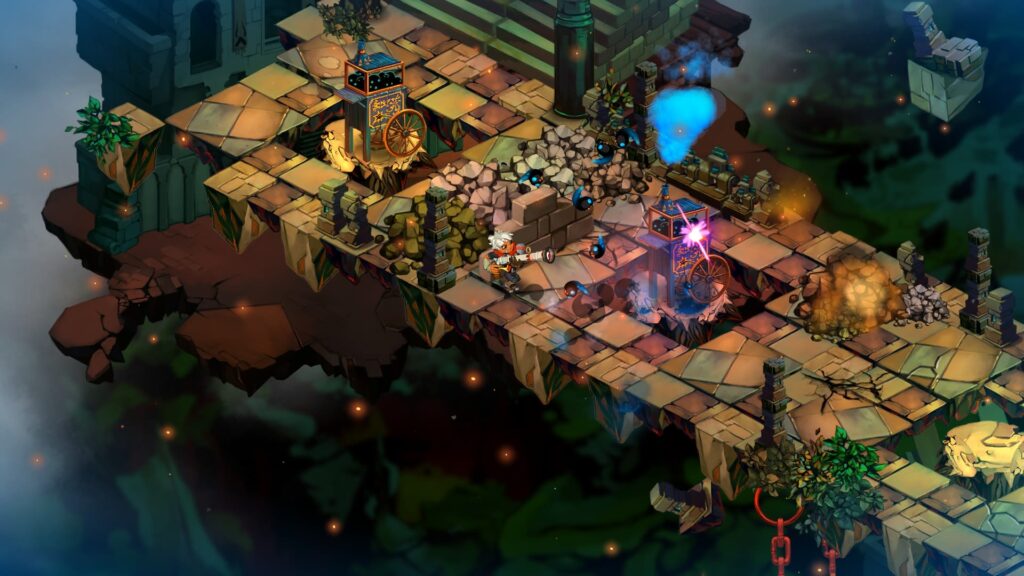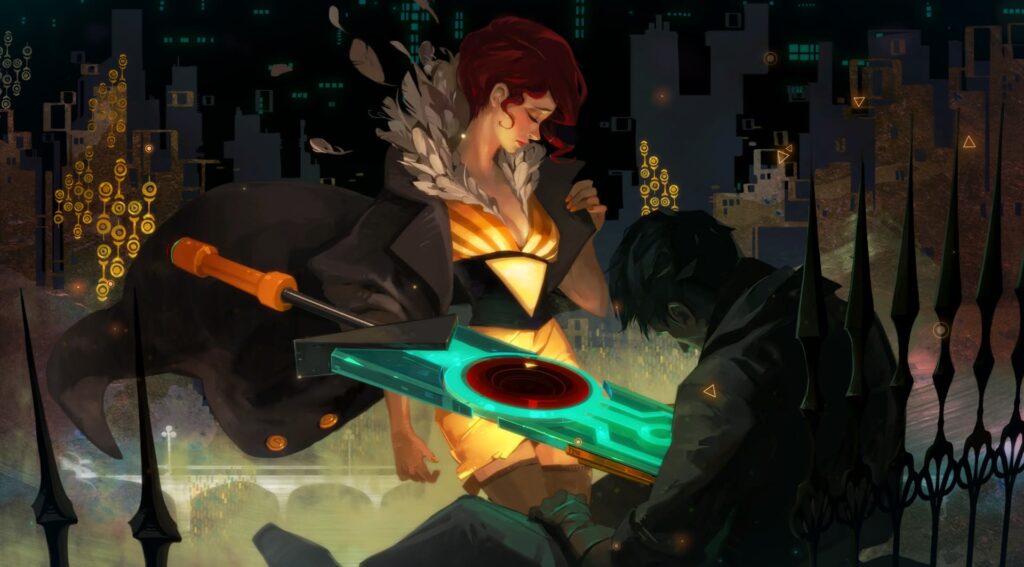This article was originally posted in 2020.
*As Hades is in Early Access and I haven’t been able to spend much time with the game yet, and I largely will not be speaking about it in this article.*
Greg Kasavin is a major reason why this website exists today. Kasavin worked at GameSpot for many years working his way up to the Editor-in-Chief position at the site and reviewed games such as Star Wars: Knights of the Old Republic and Metroid Prime to name two of my favorites. How he broke games down and talked about them made me want to cover the industry potentially as a career path.
I was saddened by his departure from GameSpot but hoped that he would find success in whatever his next venture would have been. His next job was at Electronic Arts working on the Command and Conquer series followed by a transition over to the development team for the cult-classic, Spec-Ops: The Line. However, it was his move to the brand new studio, Supergiant Games formed by a couple of his former colleagues at EA, and the products they would make, which have made this development team become my favorite in the industry.
Some of my favorite games of all-time such as Panzer Dragoon Saga, Shadow of the Colossus and Mirror’s Edge are all incredibly atmospheric with worlds that you get lost in. Immersion is one of my favorite aspects of games and Supergiant may be second to none when it comes to this. Whether it’s the post-apocalyptic frontier of Bastion, the dark cyberpunk city of Cloudbank in Transistor, the barren, yet vibrant fantasy world of the Downside of Pyre or Hell itself in Hades, I never want to leave. Immersion can be broken down into three categories for me: worldbuilding, art and music. It’s tough to achieve this if even one of the three is lacking but Supergiant has yet to fail on this front.

Worldbuilding
The worldbuilding is largely the duty of Greg Kasavin in terms of dialogue and flavor text throughout the adventures. Not only that, but SG also allows you to dig into lore as much or as little as you’d like, which is greatly appreciated. Some people don’t want every tidbit thrown in their faces and want to simply play the game. Luckily, most of the time the option is there to delve as deep as you’d like.
With Bastion, most of the worldbuilding came from the narrator, Rucks. But there are also optional mementos that you can find by exploring the different levels and present to him, and other characters, to get more background on what has happened to the world around them. Transistor’s system is my favorite in this regard as quite a bit of lore is revealed through equipping Functions (eg. skills) in different slots: active, upgrade or passive. Every time you use a skill in each one of those variations, more lore about the character tied to that is revealed to you. Being more of a visual novel than the previous games, Pyre will show highlighted text ala Zelda and you can hover your cursor over it to get background on the person, place or thing coupled with the dialog among the large cast.
Art
Jen Zee has been at the studio since Bastion and her artstyle has become a calling card of the studio. While the color pallet of the studio’s first game wasn’t always the most diverse, the enemy design along and structures looked like nothing I had truly seen before.
However, Transistor is what made me fall head over heels for it with the city of Cloudbank. Vibrant colors and unsettling enemies made my journey through the metropolis a breathtaking one. I have hundreds of screenshots that I took on my PlayStation 4 that I randomly scroll through sometimes and even have a signed poster of Red by some of the Supergiant crew (and another one on the way).
Pyre is a watercolor painting come to life. The Downside is a land filled with huge natural wonders and corpses of creatures long gone that ooze history and battles of times long past. Not only that, but the character designs of your crew, the Nightwings, vary wildly from the single-eyed wyrm knight Sir Gilman, to the hulking demoness poster child, Jodariel. Their appearances convey their stories without a single word appearing on-screen. While Transistor has my favorite visual aesthetic, Pyre is not far behind.

Music and Voice Acting
Jen Zee and Darren Korb’s works are more or less what Supergiant is known for to the general gaming population with the music being performed live by Darren and vocalist Ashley Barrett at several conventions with the most recent one being PAX West this year. All three of the full games that have been released have dramatically different sounds to suit the vastly varied environments and stories.
Bastion’s sound, as described by Korb is “acoustic frontier trip-hop” and, once you know what trip-hop is (as I did not) makes total sense. Both the narrator and the music portray a sense of a post-apocalyptic western with fantasy elements. It generally conveys a laid-back tone which nicely counters the destruction that has taken over the world.
Transistor, on the other hand, is branded by Korb as “old-world electronic post-rock” which, as someone who is not musically inclined, breaks my brain a bit. However, what I can say is that the tone and instruments used to reflect the cyberpunk-ish, dystopian future are spot on in building a slow rise in tension as everything slowly falls apart around you. What sets Supergiant’s sophomore effort apart from the rest of the catalog for me, is the heavier focus on Ashley Barrett’s vocal tracks. While “Build That Wall (Zia’s Theme)” may be the “One-Winged Angel” of the developer’s catalog, Transistor’s vocal tracks are more numerous and impactful. The protagonist is a singer who had her voice taken away, so you hear her songs in some flashbacks, and she can even hum along to the background music (dedicated hum button included). These tracks are haunting and gorgeous.
Last, but not least, is Pyre which goes for a “bardic acoustic rock” feel. This game was larger and more ambitious than either Bastion or Transistor in terms of scale with far more characters and a much longer run time. Because of those things, the soundtrack is very different. While the first two games had more of a focused feel, Pyre has themes for all of the different Triumvirates you come across and is overall more varied. While it is my least favorite of the three games’ soundtracks, the fact that listening to it for the first time since I played the game and recognized not only character themes but also some of the background music pieces says something about how deep Korb’s work can dig into your subconscious.
Transparency
Beyond the spectacular output of the studio, Supergiant is also very transparent with their player base. They have had behind the scenes development series for not one, but two of their games. Website, Giant Bomb, created the “How To Build a Bastion” video series back during active development of the game chronicling the highs and lows of game development. In addition, it was also fascinating to see behind the scenes of a brand new indie studio and how it operates.
The second series is currently in development from Danny O’Dwyer and his NoClip YouTube channel on Hades, Supergiant’s game currently in Early Access on the Epic Games Store (and Steam in December). Each episode focuses on a different aspect of the studio. The first episode was the surprise launch of the game during the 2018 Game Awards, the second was the process of constantly patching a game in EA and the third focused on the art and music. I’m anxiously awaiting the next episode in the series.
From what I’ve seen through these documentaries, the studio is relatively small with a very collaborative environment where everyone has their own duties for the project, but everyone has some input on everything within the game. As we have all seen, more people working on a game doesn’t guarantee higher quality, and this collaborative approach becomes more and more difficult the more people are involved. I hope this never happens to Supergiant as it could risk their identity and quality.

Risktaking
While many fans of the studio (myself included) would love to see more adventures set in the worlds of their previous games, Supergiant has yet to make a sequel. They always want to try something new and not be shoehorned into a genre. Each new game is a new IP with a new world, lore, characters and gameplay systems. Bastion is a well-executed but straight-forward isometric action game set after the world nearly ends. Transistor is a tactical turn-based/real time sci-fi, cyberpunk love story. Pyre is magical basketball combined with a visual novel set in a fantasy world with a large cast of characters. Hades is a roguelite set in the Greek underworld.
Most companies want to play it safe or even become known for a single franchise. Granted, this isn’t inherently a bad thing, but the fact that this small independent developer does something new each and every time they put out a game, is not only inspiring but constantly brings new people in seeing something cool and bringing back long-time fans to see the next evolution of the studio’s craft.
–
I’m currently replaying all of the studio’s games thus far to see if my fond memories hold up in the present and, so far, they absolutely do. As of the time of this article, I’ve beaten Bastion (which I liked more than I remember) finished Transistor (which I still love) and have restarted Pyre. Meanwhile, I’m constantly beating my head against the wall dying over and over in Hades and loving it. I would love Hades and Pyre to show up on Switch so I can play them even more . . . hopefully someday. Most of all, I just want to thank Supergiant Games for creating the games that they do. The cohesiveness of the creative vision is second to none in the industry, and I hope for many more games to come.





